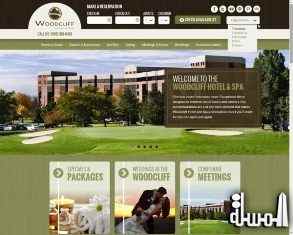
Dictate a Clear Purpose with Information Architecture
Almasalla,Gate Arab Tourism News-Conversion is king when it comes to web presence within the hospitality vertical. The more matter-of-fact way of saying it is, putting heads in beds.
While it is vital to create an immediate emotional connection with a visitor to ensure they stick around, the next all important piece is creating a good user experience free of friction. A cornerstone of that user experience is information architecture (IA). It’s not the only critical element, as good photography, a well thought interface and an aesthetic presence are integral to a good user experience, but let’s steer the conversation back to IA.
Defining IA
IA is not one of the fancier “best practices” in the hotel website design world. IA is essentially the art and science of presenting content to support a good user experience and “findability” (the ability to find or locate information on a website). This practice helps to create an intuitive navigation pattern that makes it easy for users to access the most important information in a way that supports a buying decision. More often than not, websites are created with a focus on what we think our guests and travel shoppers want. With IA, the question is not necessarily what do they want, it is, what do they need? Often times, travelers might have a notion of what they want, but if you present to them a compelling and relevant stay option (even if it’s slightly different than what they wanted), they realize it’s what they need.
Graphic – 3 circles with the words Context, Content and UsersGood IA is All About:
Users – This is your audience. You need to know who they are, their behaviors and their needs. How do they browse websites? What experiences are they looking for? You should build a user persona, or personas, to guide decisions throughout the project.
Context – Context is the circumstances that form the setting for an event, statement or idea. You’ll want to define your circumstances in terms of goals, culture, technology and resources. You will also want to define your constraints.
Content – How will you structure your content, what is the meaning behind the content that is on the page? Will the content provide the experience your user is looking for, while fitting in to the circumstances of your context?
When it comes to information processing and the ordering of knowledge, there are generally two different approaches. These approaches are:
Top-Down: With top-down, you design your IA in a way that you will answer the most common questions that your website visitors will have. For a hotel, on a simple level, these could likely be where are you located, what do the rooms look like and what are your rates. That is why for a top-down architecture, you would highlight your date rate search box, specials and location all within the main call to actions and navigation.
Bottom-Up: With bottom-up, you piece together content or topics and then create your site from there. This approach focuses on using content and classification as the building blocks for the site in additional to maintenance procedures. Bottom-Up is largely determined by search engine optimization (SEO) efforts (don’t think this means that using a bottom-up technique will improve your SEO rankings). Things to consider if you opt to use a bottom-up approach: how many silos of information are there and are they clearly identified? If a user is delivered deep into a site, are they one clear click away from the important information you want them to know?
Neither one of these approaches is ideal for every situation. In fact, many websites are developed with a blend of top-down and bottom-up. Determining which approach to use, or how much of each approach, is determined during the research stage of website development.
Table of a hotel web site site map
Let’s start with the sitemap: In this top-down example, the grey pages provide information that guests need to know about your hotel. The yellow utility navigation represents pages you can act on. Think of it this way: you’re trying to fill your hotel rooms, so the main navigation should focus on that.
Screenshot – Woodcliff Hotel and Spa web site
The final product: A good sitemap will convert into a website that creates an effective user experience, while directing users to the information that they need. To view the full website visit: http://www.woodcliffhotelspa.com/
Why Do You Need IA?
To wrap things up, IA is the pathing of users to the most important content (more about what your guests need, rather than want). The main goal is to alleviate friction. If a user gets to your website and can’t find what they are looking for within one to two clicks, they are gone and moving on to your competition. Goodbye direct revenue, hello low SERP rankings and high bounce rates. Be sure to do what’s in the best interest of your hotel and your guests and give them what they need – an easy to navigate website that answers their questions and ultimately ends with you having another room booked in your hotel.








